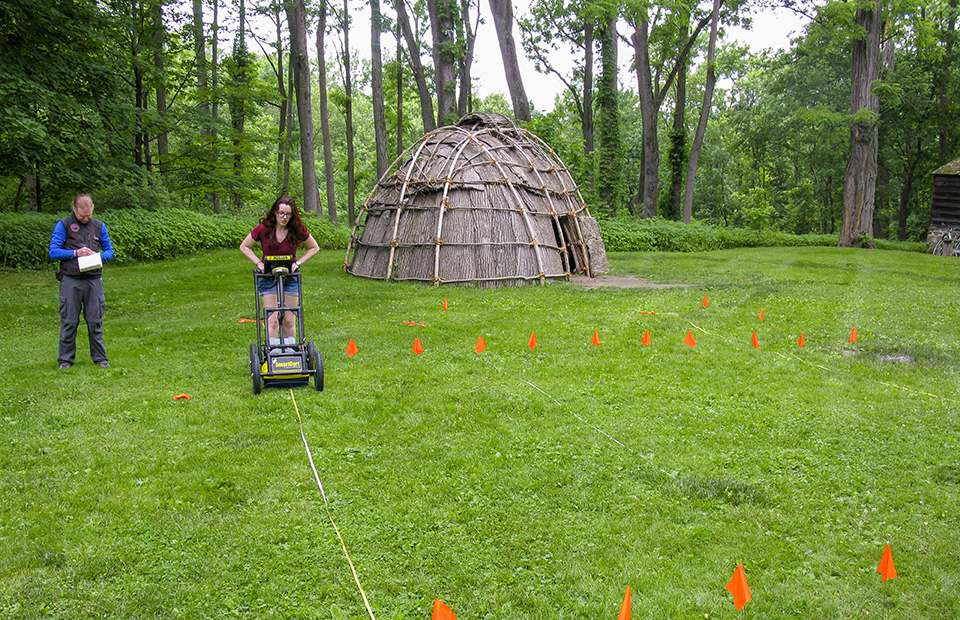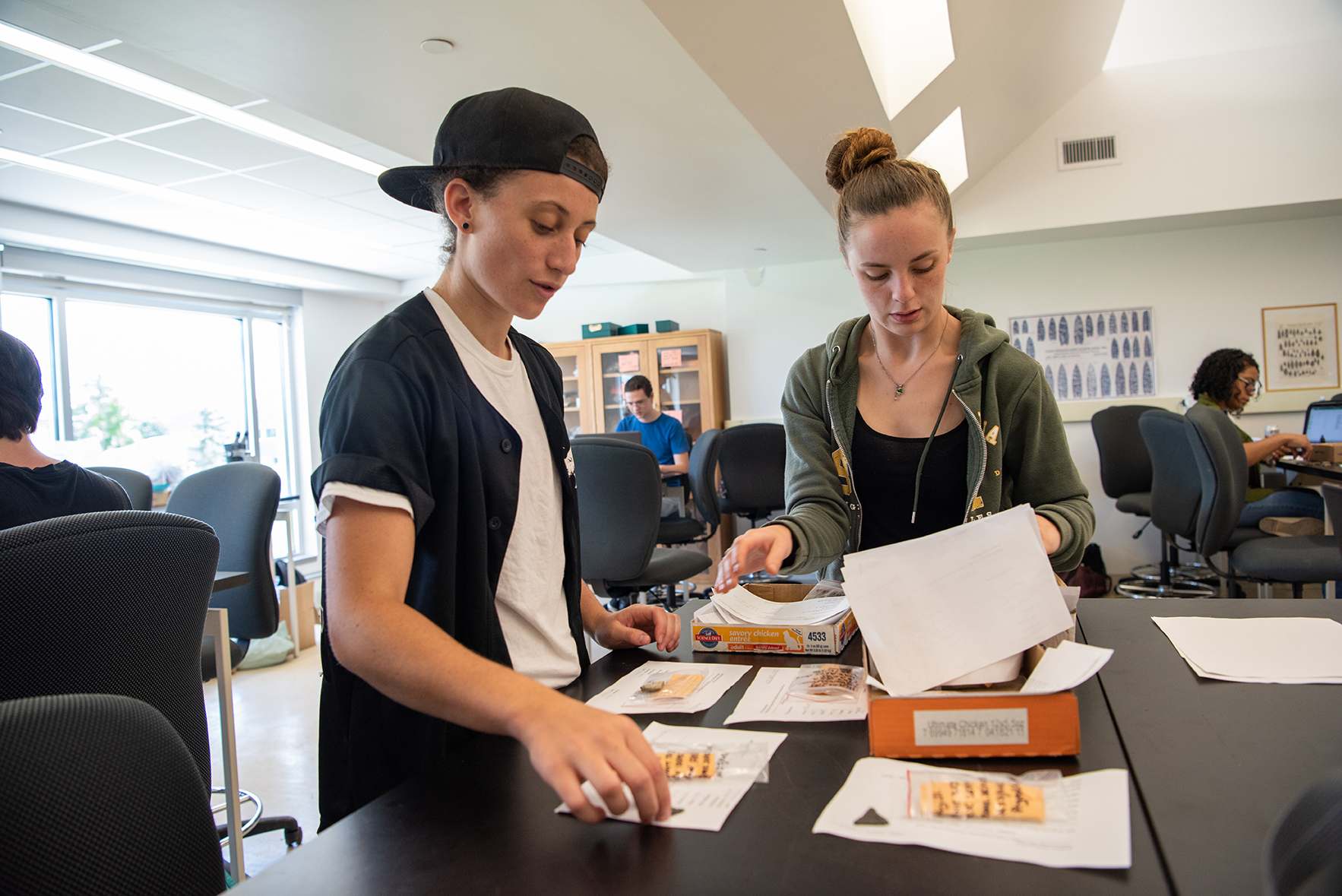UNY New Paltz’s Archaeological Field School at Historic Huguenot Street literally broke new ground this year, thanks to a partnership with the Department of Geology and the use of advanced radar equipment.
Associate Professor Joseph Diamond of the Department of Anthropology leads students in conducting archaeological digs at the historic New Paltz settlement each summer, and regularly turns up artifacts and other evidence of European and Native American life dating back hundreds of years.
The GPR survey at Historic Huguenot Street revealed anomalies about half a meter down
This year, Diamond worked with Associate Professor of Geology John Rayburn to search for previously undiscovered structures using a ground-penetrating radar (GPR) system.
“We were looking for what are called anomalies,” Diamond said. “We had already discovered one side of a circa 1678 redoubt trench, and using the GPR we were able to locate another corner. I’ve been looking for that for about the last six or seven years, because finding the third corner of the redoubt tells us how big the whole fortification was.”
The Geology Department purchased the advanced radar system in 2017. It works by sending radio frequencies into the ground and recording received signals digitally, so they can be processed using software that allows for sophisticated interpretation.
“Geo-archaeology is a very common use for a GPR, but the instrument has many applications,” Rayburn said. “Probably the most common is locating underground infrastructure like water, sewer and electrical lines. Environmental consulting firms use GPR to locate active or abandoned underground storage tanks to remove or fix, and geologists can use GPR to locate changes in rock or sediments below the ground, or find the depth of the ground water table.”

The GPR survey at Historic Huguenot Street revealed anomalies about half a meter down

John Rayburn and Madeline Miller ’18 operating the Ground Penetrating Radar. “It’s like a quiet lawnmower,” Diamond said.
In consultation with Diamond, Rayburn worked with Madeline Miller ’18 (Environmental Geochemical Science) in June and July to survey a series of grids on Huguenot Street. They found compelling evidence of the stockade section Diamond was looking for.
Their prediction was confirmed this summer by Archaeology Field School students Caroline O’Hanlon ’20 (Anthropology) and Lindsay Bettke ’19 (Geology), who were able to locate the structure and extract a number of artifacts associated with fortification construction, including hand-wrought nails, Dutch bricks, pipe stems and majolica.
“It’s been a great experience, honestly, because I didn’t know anything about fieldwork in archaeology before this class,” Bettke said. “We got to do so much over the course of just four or five weeks. Actually doing the work with my own hands, I feel like you learn so much more.”

Archaeology doesn’t end at the dig site. Bettke (left) and O’Hanlon returned to Wooster Hall to catalog their findings.
“The findings that came out of this summer’s field school are as exciting for HHS as they are for Joe and his students,” said Historic Huguenot Street Executive Director Liselle LaFrance. “Our decades-long partnership has reaped significant benefits for both institutions.”
While this is not the first SUNY New Paltz student-faculty collaboration using ground-penetrating radar – Rayburn has borrowed instruments for research projects in the past – the Geology Department’s acquisition of its own system represents a new era for students interested in developing skills with a widely-used tool of the trade.
“We will be able to train students on it as part of regular class exercises, and it will certainly support many Geology/Environmental Science/Archaeology student research projects in the years to come,” he said.
Visit SUNY New Paltz online for more information about the Department of Geology, the Department of Anthropology, and the Summer Archaeological Field School.





